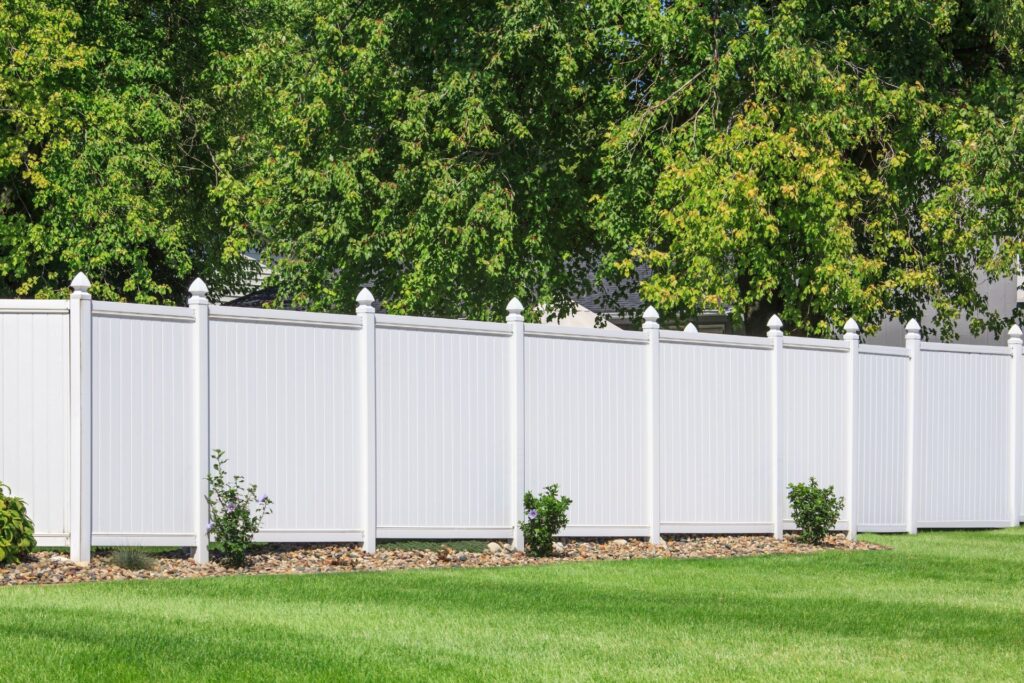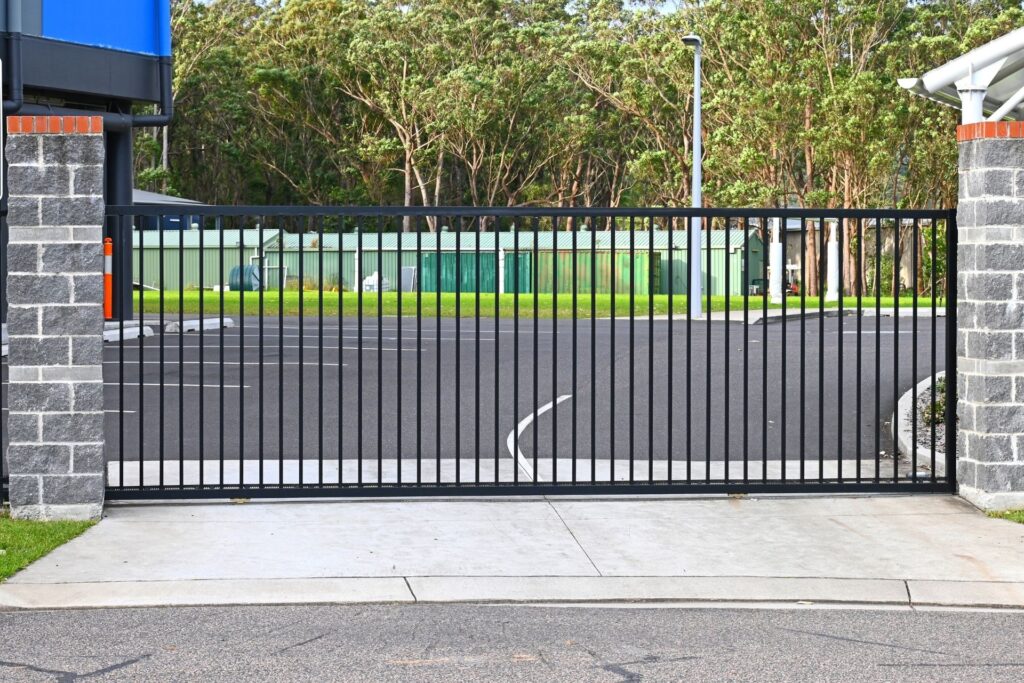Welcome to our comprehensive guide on NZ’s Unitary Plan height restrictions for fences, where we’ll help you navigate the often-confusing world of fencing regulations. Whether you’re planning to build a new fence or simply looking to upgrade an existing one, understanding these rules is essential for avoiding potential legal issues and ensuring harmony with your neighbors. In this article, we’ll break down the key aspects of the Unitary Plan, explaining how it impacts the height and style of fences across different zones in New Zealand. By the end, you’ll be equipped with the knowledge to make informed decisions and comply with local regulations, all while enhancing the privacy, security, and aesthetic appeal of your property.
Under New Zealand’s Unitary Plan, the standard height limit for residential fences is generally up to 1.8 meters. Fences facing public roads typically have a lower maximum height of 1.2 meters to maintain visibility and neighborhood appeal. Regulations may vary depending on the zoning of your property, with stricter rules in heritage or coastal areas. To build a fence higher than the allowed limit, homeowners must apply for resource consent. Always check your local council’s guidelines to ensure compliance.
Table of Contents
What Is The Unitary Plan And How Does It Relate To Fences?
When you’re thinking about building a fence around your property in Auckland, it’s important to understand how the Unitary Plan comes into play. The Auckland Unitary Plan is a framework that guides the future development of the city, including how properties can be used, developed, and structured. This plan impacts a variety of aspects of urban living, from housing density to environmental protections, and even details like fences.
Explanation of the Unitary Plan
At its core, the Auckland Unitary Plan is designed to support sustainable growth by managing how land is used across the region. It sets out the rules and regulations that govern the types of developments allowed in different areas, ensuring that urban expansion is balanced with environmental preservation, economic growth, and the needs of the community.
When it comes to property boundaries, like fences, the Unitary Plan plays a crucial role. It dictates what can and can’t be done on your property, helping to maintain an aesthetic harmony across neighborhoods while also preserving privacy, safety, and accessibility. Essentially, the Unitary Plan ensures that individual property rights don’t clash with the broader interests of the community.
Why Fencing Rules Are Included
Fencing regulations within the Unitary Plan are designed to strike a balance between what homeowners want and what’s best for the community as a whole. Fences play a significant role in shaping the visual appearance and character of a neighborhood. They can enhance privacy, mark property boundaries, and provide security. However, if not properly regulated, they could also block views, reduce sunlight, or create a cluttered, uncoordinated look in an area.
That’s why the Unitary Plan includes specific guidelines for fencing, such as maximum heights, permitted materials, and placement restrictions. These rules help ensure that fences serve their purpose for the property owner without negatively affecting neighbors or the broader environment.
For example, the plan might set height limits on fences to prevent them from overshadowing a neighbor’s garden or reducing street visibility for drivers. By adhering to these rules, homeowners contribute to a more cohesive and attractive community, while still enjoying the privacy and security a fence provides.
How It Applies to Different Areas
It’s also worth noting that the Unitary Plan’s fencing rules can vary depending on the area you live in—whether it’s an urban, suburban, or rural zone. Urban areas, for instance, may have stricter rules to maintain street visibility and encourage a more open, communal atmosphere. Suburban areas might focus more on aesthetic consistency and privacy, while rural zones could prioritize environmental impact and wildlife considerations.
In summary, the Auckland Unitary Plan is a crucial document that helps guide the development and use of land across the city, including how fences should be constructed. By understanding and following these guidelines, you can ensure that your fence not only meets your needs but also aligns with the community’s goals for sustainable growth and livability.

Height Restrictions For Fences In Different Zones
When it comes to building fences on your property, understanding the local height restrictions is crucial. Fence regulations differ depending on the zoning of your land, and these rules are designed to balance privacy, aesthetics, and safety concerns. Below is a detailed breakdown of fence height restrictions in various zones to help you stay compliant with local regulations.
1. Standard Residential Zones
In standard residential areas, fence height restrictions are fairly consistent and focus on maintaining a harmonious neighborhood atmosphere while providing property owners with some level of privacy.
Common Restrictions
In most standard residential zones, the maximum height for fences is around 1.8 meters. This limit strikes a balance between privacy for homeowners and ensuring that properties don’t become overly isolated from the surrounding community. These regulations are designed to preserve the open feel of suburban environments while allowing residents to enjoy their private space.
Street-facing Fences
Fences that face public roads often have stricter height limits. The typical restriction is around 1.2 meters. This lower height is intended to enhance visibility for drivers, pedestrians, and cyclists, reducing the risk of accidents near intersections or driveways. Additionally, shorter street-facing fences maintain a sense of openness and cohesion within neighborhoods, preventing properties from becoming too visually enclosed.
2. Mixed Housing Zones
Mixed housing zones, which include suburban and urban areas, often have more nuanced regulations due to the diversity of housing types and land use.
Specific Considerations
In mixed housing zones, local councils may allow for greater flexibility in fence heights. For example, areas with higher-density housing or urban environments might permit taller fences to provide adequate privacy between neighboring properties. In suburban areas, regulations might be more relaxed in the backyard compared to the front yard. These zones are typically less restrictive than standard residential zones but still aim to ensure that fences contribute positively to the streetscape and community aesthetic.
3. Rural Zones
Rural zones are distinct in their approach to fence height regulations due to the unique needs of larger, more isolated properties.
More Relaxed Rules
In rural areas, fences serve not just as boundary markers but also as tools for managing livestock, ensuring security, and providing privacy. As a result, rural zones often permit taller fences, sometimes exceeding 1.8 meters. These taller fences are crucial for safety and functionality, particularly in areas where animals need to be contained or where landowners require enhanced privacy from neighboring properties or roadways. The more relaxed approach in rural zones reflects the different priorities in these less densely populated areas.
4. Exceptions to the Rule
While the general guidelines outlined above cover most scenarios, there are exceptions depending on specific local circumstances or overlays.
Special Overlays
In areas with special considerations—such as heritage sites, coastal environments, or conservation areas—there may be stricter or more relaxed fence height restrictions. For example, in heritage zones, fences might need to adhere to specific design standards to preserve the historical character of the neighborhood, which could include height restrictions. Similarly, in coastal or environmental conservation zones, fence regulations might aim to protect views, local ecosystems, or wildlife, leading to unique height and material restrictions.
Understanding fence height regulations for your property is essential for ensuring that your fencing project complies with local rules and enhances your neighborhood’s visual appeal and safety. Always check with your local council or planning authority before beginning any construction, as specific guidelines can vary depending on your location and zoning type.
By adhering to these regulations, homeowners can strike a balance between personal privacy, safety, and contributing positively to the overall aesthetic and safety of their community.
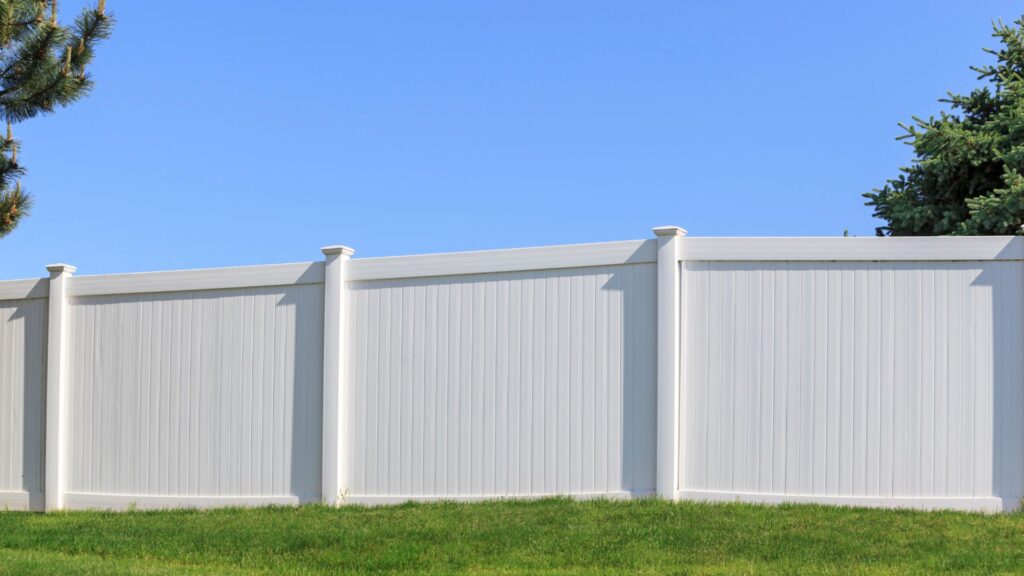
Why Do Height Restrictions Vary? Key Factors To Consider
When building a fence, understanding the height restrictions is crucial. These restrictions are not random; they are put in place to balance the needs of homeowners, neighbors, and the broader community. Several factors influence these limits, including the purpose of the fence, neighborhood aesthetics, safety concerns, and legal requirements. Let’s break down these key factors in detail:
Purpose of Fencing
The primary reason for installing a fence can significantly impact the allowed height. Fences serve various functions such as providing privacy, enhancing security, or adding to the visual appeal of a property. For example, if privacy is a homeowner’s main concern, they may prefer taller fences that block the view from surrounding properties. On the other hand, if the goal is purely aesthetic or decorative, shorter fences are often more appropriate to maintain an open and inviting atmosphere. Local regulations often reflect these purposes, allowing taller fences for privacy in backyards while requiring lower ones in front yards to maintain visibility.
Neighborhood Character
Zoning regulations are carefully crafted to preserve the character and harmony of different neighborhoods. In residential areas, especially those with a cohesive visual style, fence height limits help ensure that no one property stands out in a way that disrupts the overall appearance. For example, historic neighborhoods or suburban areas with open, spacious layouts may have lower fence height limits to promote visibility and openness. In contrast, more isolated or modern areas might allow taller fences to provide homeowners with the privacy they desire. These regulations help maintain a balance between individual preferences and the community’s shared visual environment.
Public Safety and Visibility
Another key factor influencing fence height restrictions is public safety. In many areas, tall fences are limited, especially near roads and intersections, to ensure clear sightlines for drivers, cyclists, and pedestrians. High fences can obstruct visibility, leading to dangerous situations where someone might not see an oncoming vehicle or pedestrian. In these cases, height restrictions are not just about aesthetics but also about preventing accidents and keeping the community safe. Municipalities often enforce stricter regulations in areas near traffic to ensure that safety is a top priority.
Neighboring Properties
Building a fence isn’t just about your property—it can also affect those living next door. If a fence is too tall, it might block sunlight from reaching a neighbor’s yard or windows, obstruct their view, or create a sense of confinement. Many local regulations consider these impacts, setting height limits to ensure that no homeowner’s enjoyment of their property is unfairly compromised by a neighbor’s fence. Good relationships with neighbors often depend on finding a balance between personal preferences and mutual respect for shared spaces. In cases where disputes arise, fence height restrictions help provide a clear legal framework to resolve issues.
Council Input and Special Permissions
In some situations, a homeowner may wish to build a fence that exceeds the standard height limits set by local authorities. In such cases, they typically need to apply for a resource consent or special permission from their local council. The council will assess the request, taking into consideration factors such as the impact on the neighborhood, public safety, and any concerns raised by neighbors. If the application is approved, the homeowner may proceed with building the taller fence, but this process ensures that the broader community’s interests are also considered. This layer of oversight helps maintain fairness and consistency in how fence height regulations are applied.
In conclusion, height restrictions for fences vary based on several important factors, all aimed at balancing personal preferences with community well-being. Whether you’re building for privacy, security, or aesthetic purposes, it’s essential to be aware of these considerations and follow local guidelines to ensure a smooth process. By respecting these restrictions, homeowners can create functional, attractive fences that enhance both their property and the surrounding area.
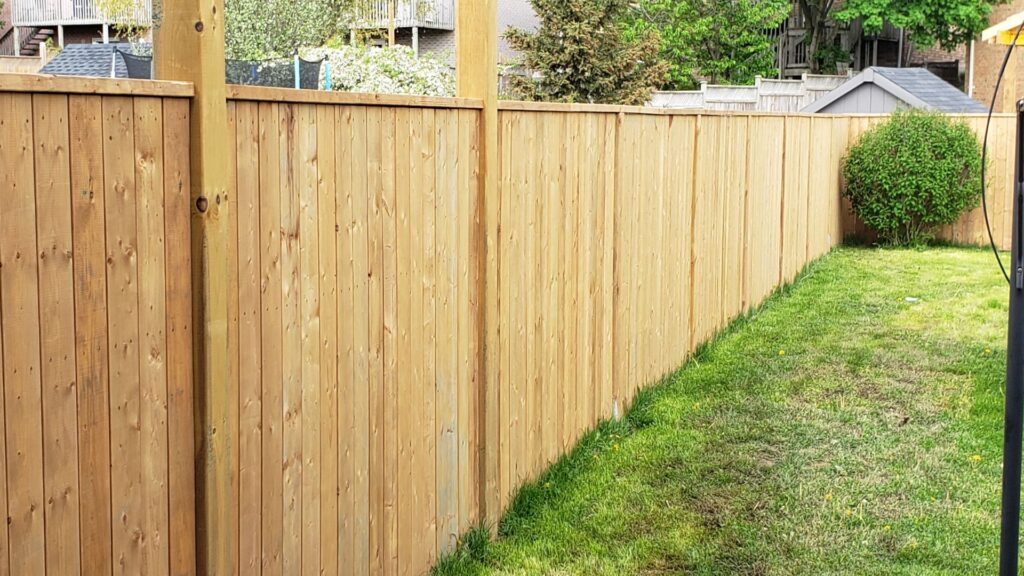
What Happens If You Violate Fence Height Restrictions?
Consequences of Non-Compliance
If you ignore fence height restrictions, you may face several consequences that can be both costly and stressful. Most local governments or councils enforce strict regulations about how high a fence can be, especially in residential areas, to maintain safety, aesthetics, and fairness among neighbors. When these rules are violated, the repercussions often include:
- Fines and Legal Action: One of the most common outcomes of non-compliance is receiving a fine. Local authorities usually start by issuing a warning, giving you a chance to address the issue voluntarily. If you fail to respond, fines can quickly accumulate, and in some cases, the council may take legal action. This could result in a court order to modify or even remove the fence. Legal disputes can escalate the cost significantly, as you may be required to pay court fees and cover any remedial work.
- Forced Modifications or Removal: In many instances, after a violation is reported, the homeowner is given a deadline to correct the issue. This could involve reducing the height of the fence or altering it to meet local regulations. Failing to comply within the specified time can result in even steeper penalties or a mandated fence removal.
Impact on Neighbor Relations
Beyond legal consequences, violating fence height restrictions can also strain relationships with your neighbors. Fences are a common source of disputes in residential areas, especially if one party feels that the structure blocks their sunlight, view, or invades their privacy. These disagreements can quickly escalate from civil discussions to full-blown legal battles. Often, neighbors will report height violations to the authorities, which can breed resentment and lead to ongoing tensions.
In more severe cases, a neighbor might take you to court, seeking compensation for perceived damages caused by your non-compliant fence. This can lead to lengthy and expensive litigation, further damaging neighborly relations and costing both parties time and money.
Rectifying Issues
If you’ve discovered that your fence is in violation of height restrictions, there are steps you can take to resolve the situation before it gets worse. The first thing to do is check the specific regulations in your area—this could involve consulting local government guidelines or speaking directly with a building inspector.
Here are some practical ways to address a fence height violation:
- Lower the Fence: The simplest solution is to reduce the height of your fence to comply with the regulations. This might involve cutting down sections or reconfiguring the structure.
- Apply for a Permit or Variance: In some cases, you may be able to apply for a special permit or variance that allows for a taller fence. This typically requires proving that the fence’s height is necessary for privacy or safety reasons, but approval is not guaranteed.
- Retrofitting or Adjusting the Fence: Another option is retrofitting your fence to meet regulations without completely removing it. This can include adjustments like altering the design or material of the fence to minimize its impact.
By taking these steps quickly, you can avoid larger legal issues and prevent ongoing friction with your neighbors. Early action demonstrates a willingness to cooperate, which can go a long way toward resolving disputes amicably.
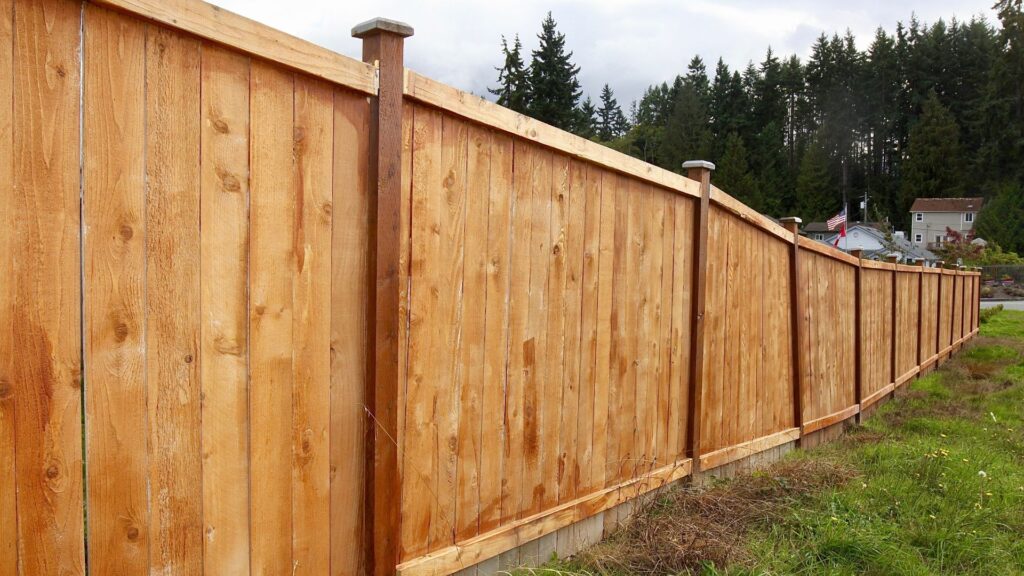
How To Check The Height Restrictions In Your Area
Before building or upgrading a fence, it’s crucial to understand the height restrictions that apply to your property. Local regulations can vary, so being informed about the rules in your area can save you from potential fines or the need to rebuild. Here’s a comprehensive guide on how to check fencing height restrictions:
1. Consulting the Unitary Plan
The Auckland Unitary Plan is a key resource for anyone wanting to understand local regulations, including fencing rules. The Plan outlines specific height restrictions that apply to different zones and property types.
Here’s a step-by-step guide to accessing the Auckland Unitary Plan online:
1. Visit the Auckland Council Website: Start by heading to the official Auckland Council website.
2. Search for the Unitary Plan: Use the search function to locate the “Auckland Unitary Plan” or go directly to the section under planning and building regulations.
3. Navigate to the Zoning Section: Zoning is important because fencing regulations can vary depending on your property’s zone. Locate the interactive map or search for your address to find out what zone your property falls under.
4. Check the Fencing Rules: Once you know your zoning, refer to the specific regulations for fencing height. Residential, commercial, and rural zones may all have different limits, so make sure you’re looking at the rules that apply to your property type.
By consulting the Unitary Plan, you’ll get clear guidance on what is allowed and avoid potential violations.
2. Reaching Out to Your Local Council
If the Unitary Plan doesn’t fully answer your questions or if your property has unique circumstances, contacting your local council is a good next step. Local councils are well-versed in the specific rules that apply to each neighborhood and can provide personalized advice.
How to Contact Your Local Council:
- Call or Email: The easiest way to get quick answers is by calling your local council’s customer service or sending them an email. Explain your situation and ask for clarification on any points you’re unsure about.
- Visit in Person: For more complex queries, visiting the council office might be the best option. You can speak directly with a planning officer, who can review your situation in detail and provide tailored advice.
- Use Online Resources: Many councils have online tools or FAQ sections where you can find information on building codes and fencing regulations. These resources are designed to be user-friendly, making it easier to understand local laws without needing to reach out.
Reaching out to your local council ensures that you have the latest and most accurate information for your area, especially if there have been recent updates to the rules.
3. Hiring a Professional
While it’s possible to navigate height restrictions on your own, hiring a professional can make the process smoother and more reliable. Professionals like surveyors, urban planners, or fencing contractors have extensive knowledge of local regulations and can offer precise guidance to ensure compliance.
Why Hire a Professional?
- Expertise: Professionals are familiar with the intricacies of local building codes and zoning laws. They can quickly identify any restrictions that apply to your property and help you plan your fence accordingly.
- Compliance Assurance: By hiring a professional, you reduce the risk of making costly mistakes. They can ensure that your fence not only meets height restrictions but also complies with other potential requirements, like material types or setbacks from property lines.
- Time-Saving: Navigating legal documents and local regulations can be time-consuming. A professional can handle the legwork, ensuring everything is done correctly without delays.
In some cases, a professional’s input may even be required if your fencing project involves significant changes or if your property is in a sensitive area, such as near heritage sites or environmentally protected zones.
By following these steps—consulting the Unitary Plan, reaching out to your local council, and considering professional help—you can confidently move forward with your fencing project, knowing that you’re fully compliant with local regulations.
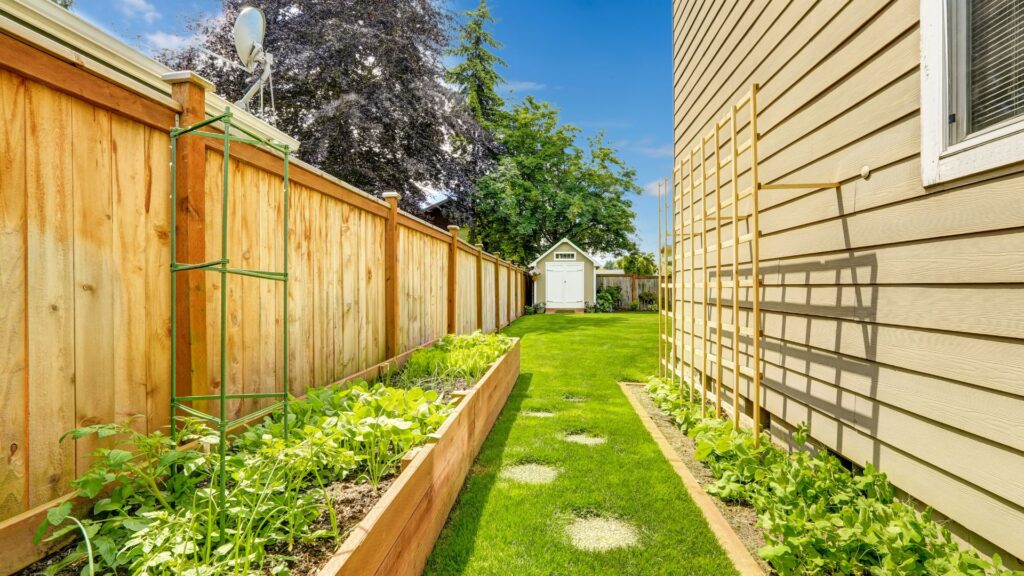
Applying For Exemptions Or Special Permits
When planning to build a fence that exceeds the standard regulations, such as height limits or boundary restrictions, you may need to apply for an exemption or special permit, often referred to as a resource consent. This guide will walk you through the entire process, explaining when you need an exemption, how to apply for resource consent, and some valuable tips for ensuring your application is successful.
When Do You Need an Exemption?
In most areas, local councils have specific regulations regarding the height and placement of fences to maintain community aesthetics and safety. Typically, residential fences are allowed up to a certain height, often around 1.8 meters (6 feet), but this can vary depending on your location and the type of property you own. If your fence design exceeds this height limit or does not comply with other local regulations, you will need to apply for an exemption through a process known as seeking resource consent.
A resource consent is a formal approval from your local council that allows you to proceed with a project that would otherwise be prohibited under standard regulations. This is required when your fence might impact neighbors, street views, or public safety. For example, if you’re building a fence that blocks natural light or obstructs a public footpath, you will need to go through the resource consent process.
How to Apply for a Resource Consent
The process of applying for a resource consent can vary depending on your local council, but it generally follows these steps:
1. Check Local Regulations
- Before applying, ensure that you fully understand the local rules regarding fences. Most councils have this information available online, so it’s essential to review it before proceeding. This will help you determine if your project needs consent or if there are other ways to adjust your plans to comply with existing regulations.
2. Prepare Necessary Documents
- Gather all required documentation before starting your application. This typically includes detailed plans or drawings of the fence, showing its dimensions, location, and materials used. You’ll also need to include a written explanation outlining why your fence requires an exemption, and how it impacts the environment or your neighbors. Photos of the site and surrounding areas may also be necessary to give the council a clear picture of your project.
3. Estimate the Costs
- Resource consent applications often come with a fee. These costs vary by council and the complexity of your application but expect to pay anywhere from a few hundred to over a thousand dollars. Additional costs could arise if expert reports or assessments (such as traffic, environmental, or engineering reports) are required to support your application.
4. Submit the Application
- Once your documents are ready and the fees are accounted for, submit your application to the local council. Some councils offer an online submission portal, while others may require physical forms to be filled out. Ensure you receive confirmation of your submission, and take note of any additional steps or requirements.
5. Wait for Processing
- After submission, the council will review your application, which can take several weeks to months, depending on the complexity of your request and the volume of applications they are processing. They may contact you for additional information or clarification during this period.
6. Receive a Decision
- After processing, the council will issue a decision. If your application is approved, you will receive the resource consent, allowing you to proceed with your fence construction. If declined, you’ll typically be given reasons for the decision, and you may have the option to revise and resubmit your application.
Tips for a Successful Application
Securing a resource consent can be a straightforward process if you follow best practices and take a few extra steps to increase your chances of approval:
Seek Neighbor Consent
- One of the most common reasons for denial is the potential impact on neighbors. To improve your chances, talk to your neighbors about your plans and get their written approval. Demonstrating neighbor support can significantly strengthen your application.
Consider Modifications
- Sometimes a full exemption isn’t necessary. You may be able to make small modifications to your design, such as reducing the height slightly or choosing more visually appealing materials, to bring your project closer to compliance. Compromise can lead to a smoother approval process.
Highlight Safety or Environmental Benefits
- If your fence offers safety improvements, such as better security or preventing accidents near a busy road, be sure to emphasize this in your application. Additionally, if your design enhances environmental factors, such as preserving trees or wildlife habitats, mention this as well.
Consult a Professional
- If your project is particularly complex or involves significant risks (e.g., building near a heritage site or a coastal area), it might be wise to hire a consultant or planner who specializes in local building regulations. A professional can help you navigate the process, prepare the necessary documents, and even represent your case to the council.
By carefully preparing your application and considering the potential impacts of your fence, you can significantly improve the likelihood of obtaining resource consent. Remember, this process is designed to balance individual property needs with broader community interests, so clear communication and compromise often lead to a positive outcome.
This guide provides a thorough breakdown of the exemption application process, ensuring you know when and how to apply for resource consent, and offers practical advice to ensure a smoother experience. By being proactive and understanding the local requirements, you can increase the likelihood of your fence project receiving the necessary approvals.
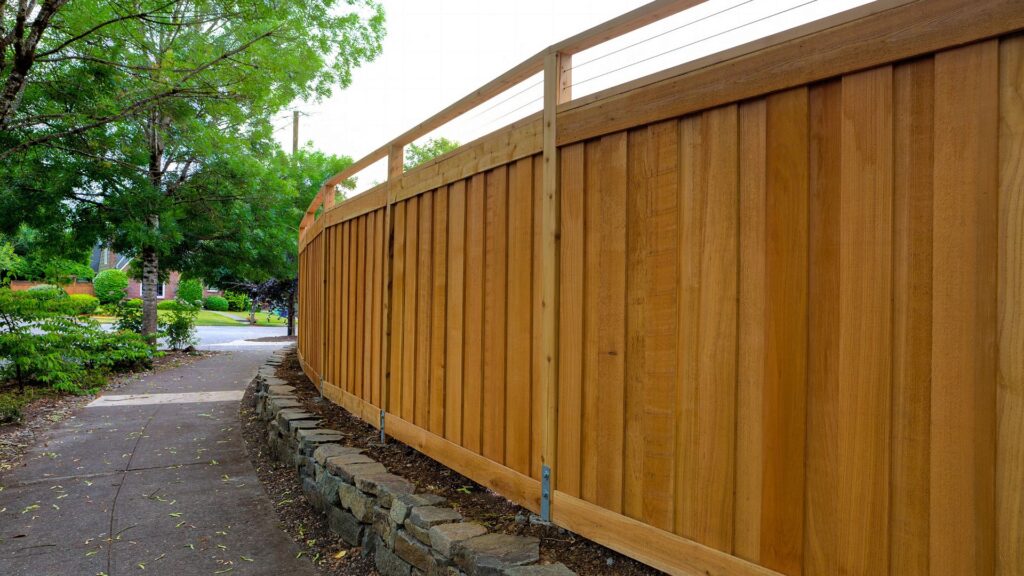
Common Fence Types And How They Align With Height Restrictions
When considering the installation of a fence on your property, it’s crucial to understand the various fence types available and how they align with local height restrictions. Fences not only serve practical purposes like providing security and privacy, but they also enhance the aesthetic appeal of your home. However, choosing the right fence goes beyond just the style or material. Local regulations often dictate the permissible fence heights, and non-compliance can lead to penalties or forced removal. Let’s explore some of the most common fence types and how they align with typical height restrictions.
Popular Fence Styles
1. Picket Fences
- Picket fences are an iconic choice for front yards and are often seen as a classic American design. These fences are usually shorter, ranging from 3 to 4 feet in height, making them ideal for marking property boundaries without obstructing views. Picket fences are primarily aesthetic and may not provide much in terms of privacy or security. Due to their lower height, they easily comply with most residential front yard height restrictions, which typically range between 3 and 4 feet.
2. Privacy Fences
- As the name suggests, privacy fences are designed to offer seclusion and security, often enclosing backyards. These fences are taller, generally standing between 6 and 8 feet high, providing a solid barrier that blocks out visibility. Privacy fences are often built using wood or vinyl, materials that ensure minimal visibility through the structure. However, it’s important to note that height restrictions for backyard fences vary by location, with many areas limiting the maximum height to 6 feet. If you want a taller fence, you may need to seek special permits.
3. Solid vs. See-Through Designs
- The choice between a solid or see-through fence design can significantly affect both the perception of height and compliance with local regulations. Solid fences, such as those made from wood or vinyl, offer complete privacy but may be more restricted in height due to local ordinances. See-through fences, like those made of wire mesh, wrought iron, or metal bars, often feel less imposing and may be allowed to reach greater heights because they don’t obstruct visibility as much as solid designs. Local regulations often take transparency into account, and fences that allow light and air to pass through, like chain-link or wrought iron, may have more lenient height restrictions compared to opaque fences.
How to Choose the Right Fence for Your Property
Selecting the right fence requires balancing practical needs such as security and privacy with aesthetic preferences and budget considerations. Here are the key factors to think about:
1. Security
- If security is a primary concern, a taller fence like a privacy or wrought iron fence is often the best option. Keep in mind, though, that taller fences, especially in front yards, may face more stringent height limitations. In many places, front yard fences are capped at 3-4 feet, while backyard fences can be taller.
2. Privacy
- If your priority is keeping your outdoor spaces hidden from neighbors or passersby, a solid privacy fence is the best choice. However, before installing one, ensure that the height complies with local codes. You might need to opt for a 6-foot fence rather than an 8-foot one to avoid breaching regulations.
3. Visual Appeal
- A fence can drastically change the appearance of your home’s exterior. Picket fences, for instance, offer charm and curb appeal but won’t offer much privacy. On the other hand, a tall, solid privacy fence might feel imposing in a front yard but works well in a backyard. See-through designs, such as metal or wire fencing, offer a balance between security and visual openness, which is ideal for preserving sightlines while still marking property boundaries.
4. Budget
- Budget is a crucial factor in choosing a fence type. Some materials, like wood and vinyl, offer solid and aesthetically pleasing designs but come at a higher cost. Chain-link and wire mesh fences are more affordable and may also allow for greater flexibility with height due to their open design. However, they may not provide the same level of privacy or aesthetic appeal.
5. Height Regulations
- Before settling on a fence style and material, it’s essential to check local building codes. Many municipalities enforce height restrictions, particularly for front yard fences, which are often limited to around 3-4 feet for safety and visibility reasons. Backyard fences typically allow for more height, but even then, 6 feet is a common limit unless you obtain special permission. Solid fences, due to their opaque nature, might face stricter regulations compared to see-through designs.
In summary, choosing the right fence involves evaluating your property’s needs for security, privacy, and visual appeal while staying within the bounds of local height restrictions. Whether you opt for a classic picket fence, a secure privacy fence, or a versatile see-through design, ensure that you comply with local codes to avoid future issues. By understanding these factors, you’ll be able to make a well-informed decision that enhances your property while meeting both functional and legal requirements.
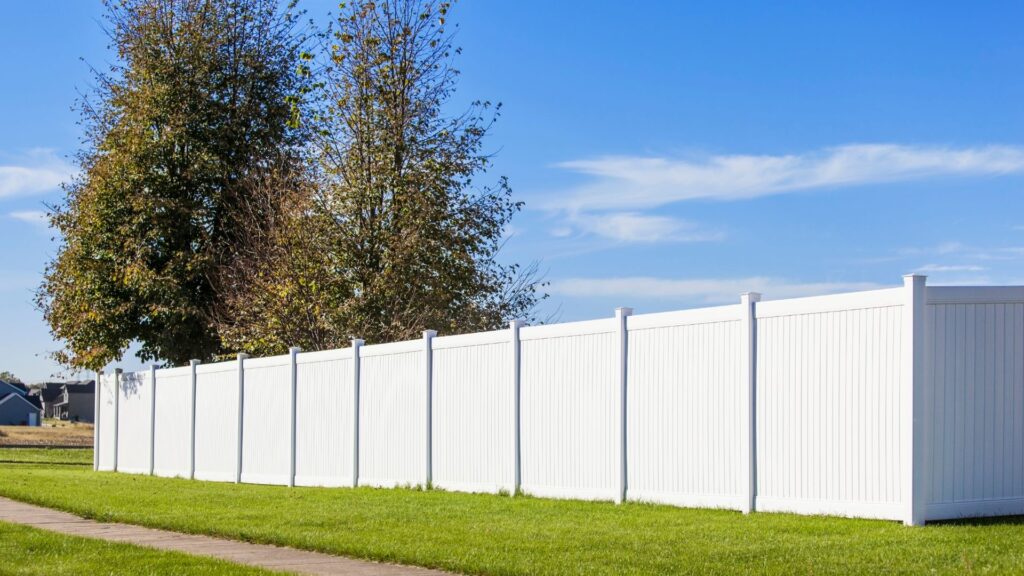
Tips For Complying With NZ’s Unitary Plan While Meeting Your Needs
When planning any development or construction on your property in New Zealand, it’s essential to adhere to the guidelines set forth in the Auckland Unitary Plan (AUP). This plan sets rules to ensure urban growth is managed sustainably while protecting the environment, communities, and property values. Here are key tips to help you comply with the Unitary Plan while still meeting your specific needs as a property owner.
Know Your Zone
Understanding your property’s zoning is one of the most crucial steps in any building or renovation project. The Auckland Unitary Plan divides the city into various zones, each with its own set of regulations about land use, building height, density, and more.
Knowing your zone will guide what you can and cannot do on your property. For instance, if you are in a “Single House Zone,” there may be stricter limits on development compared to a “Mixed Housing Urban Zone.” This knowledge helps avoid costly mistakes, such as beginning a project that later faces restrictions or enforcement issues. You can easily check your property’s zoning through Auckland Council’s online maps or by consulting with a planning professional.
Designing with Regulations in Mind
When planning any construction or renovation—such as installing a fence, shed, or even extending your home—it’s important to design with both aesthetics and regulations in mind.
Each zone under the Unitary Plan has specific rules about the placement, height, and materials you can use for structures like fences. For example, fences built on shared boundaries or facing the street may have height restrictions to ensure visibility and safety. Failing to comply with these guidelines could result in enforcement actions, including fines or even the removal of your structure. By incorporating these rules early in the design process, you can avoid unnecessary headaches and expenses later.
One effective strategy is to work with a designer or architect familiar with local regulations. They can help you create a plan that meets both your personal aesthetic preferences and legal requirements, ensuring your project gets approved quickly and without issues.
Engaging with Neighbors Early
When building on or near a shared boundary, such as putting up a new fence or extending a structure close to your neighbor’s property, it’s always a good idea to communicate with your neighbors early on in the process.
Discussing your plans with them before breaking ground helps avoid disputes and can lead to a smoother, faster project. In fact, the Fencing Act in New Zealand even requires that you give notice to your neighbors if the fence will be a shared boundary, and they may be entitled to contribute to the cost.
By fostering a collaborative approach, you not only ensure that your project complies with both legal requirements and local regulations, but also maintain good relationships with your neighbors. A win-win for everyone!
Complying with New Zealand’s Unitary Plan doesn’t have to be a daunting task. By understanding your zone, planning your design in accordance with local regulations, and engaging with your neighbors early, you can successfully meet your personal needs while staying within the bounds of the law. These steps not only save you time and money but also help protect the value and integrity of your property.
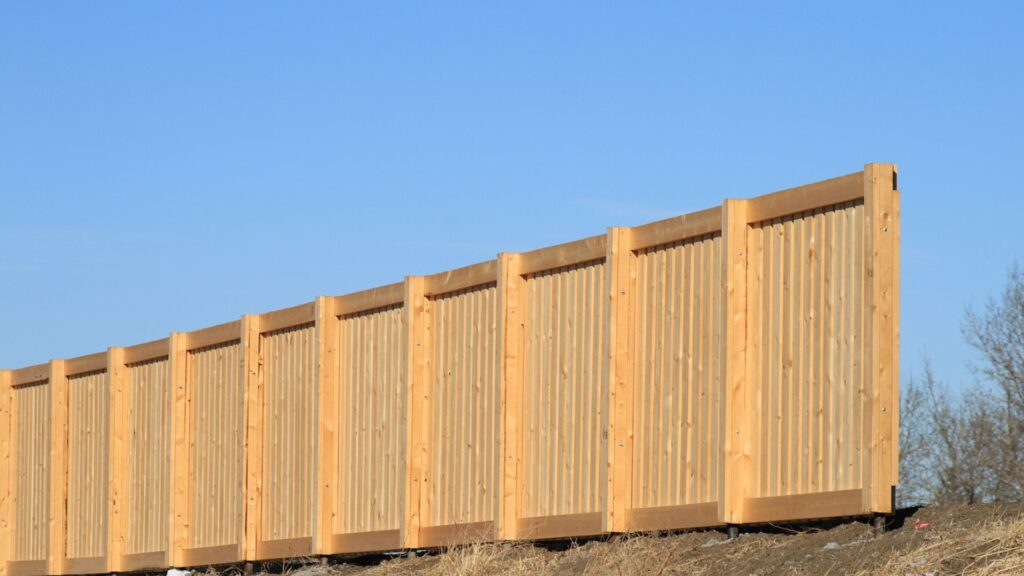
FAQs: About NZ’s Unitary Plan Height Restrictions For Fences
What is the maximum fence height allowed under NZ’s Unitary Plan?
The standard maximum height for residential fences is 1.8 meters. However, fences that face public streets often have a lower limit of 1.2 meters to ensure visibility and maintain neighborhood aesthetics.
Can I build a fence higher than 1.8 meters?
Yes, but you will need to apply for a resource consent from your local council if you wish to build a fence taller than 1.8 meters. Approval will depend on various factors, including the impact on neighbors and the surrounding environment.
How do I find out the specific fence height restrictions for my property?
You can check the height restrictions by consulting the Auckland Unitary Plan online or contacting your local council. Fence regulations vary depending on the zoning of your property, so it’s important to confirm what applies to your specific location.
Are there different fence height rules for rural areas compared to urban areas?
Yes, rural areas generally have more relaxed height restrictions compared to urban zones. Rural fences can be taller due to the need for privacy, security, and agricultural purposes. However, you should still check local rules to ensure compliance.
Do I need permission from my neighbors to build a fence?
You don’t need permission from neighbors to build a fence that complies with the Unitary Plan’s height restrictions. However, if you’re building a boundary fence, it’s a good idea to communicate with your neighbors to avoid potential disputes.
What happens if I build a fence that doesn’t comply with height restrictions?
If your fence exceeds the permitted height without resource consent, you may face fines, be required to alter or remove the fence, or have legal issues with the local council. It’s important to ensure your fence meets local regulations to avoid these penalties.
Are there height restrictions for fences around swimming pools?
Yes, fences around swimming pools must comply with specific safety regulations to prevent unauthorized access. These are separate from regular fence height restrictions and are governed by New Zealand’s Building Code, so make sure to follow pool fencing guidelines.
How do I apply for a resource consent to build a taller fence?
To apply for a resource consent, you’ll need to submit an application to your local council, including details about the fence, plans, and reasons for exceeding height limits. The process involves fees and can take several weeks or months for approval, depending on the complexity of the case.
Are there special height rules for fences in heritage or coastal areas?
Yes, properties located in heritage or coastal zones often have stricter fence height and design rules to preserve the character of the area. Always check with your local council for specific guidelines if your property falls under one of these special zones.
Can I use any material for my fence, or are there restrictions on that as well?
While there are generally no strict material restrictions under the Unitary Plan, the choice of materials may need to complement the surrounding area, especially in heritage zones. Additionally, some councils may impose restrictions on materials for safety or environmental reasons, so it’s worth checking before construction.
Conclusion
Building the right fence in compliance with New Zealand’s Unitary Plan is essential for maintaining harmony with neighbors and staying within legal boundaries. Adhering to height restrictions and other regulations not only ensures your property looks great, but it also prevents costly disputes and potential fines. If you’re unsure about specific requirements or need guidance, don’t hesitate to consult professionals or contact your local council to avoid any mistakes. After all, as the saying goes, “Good fences make good neighbors,” but only when they are built in line with the law, ensuring peace and compliance for all involved.
About the Author:
Mike Veail is a recognized digital marketing expert with over 6 years of experience in helping tradespeople and small businesses thrive online. A former quantity surveyor, Mike combines deep industry knowledge with hands-on expertise in SEO and Google Ads. His marketing strategies are tailored to the specific needs of the trades sector, helping businesses increase visibility and generate more leads through proven, ethical methods.
Mike has successfully partnered with numerous companies, establishing a track record of delivering measurable results. His work has been featured across various platforms that showcase his expertise in lead generation and online marketing for the trades sector.
Learn more about Mike's experience and services at https://theleadguy.online or follow him on social media:

